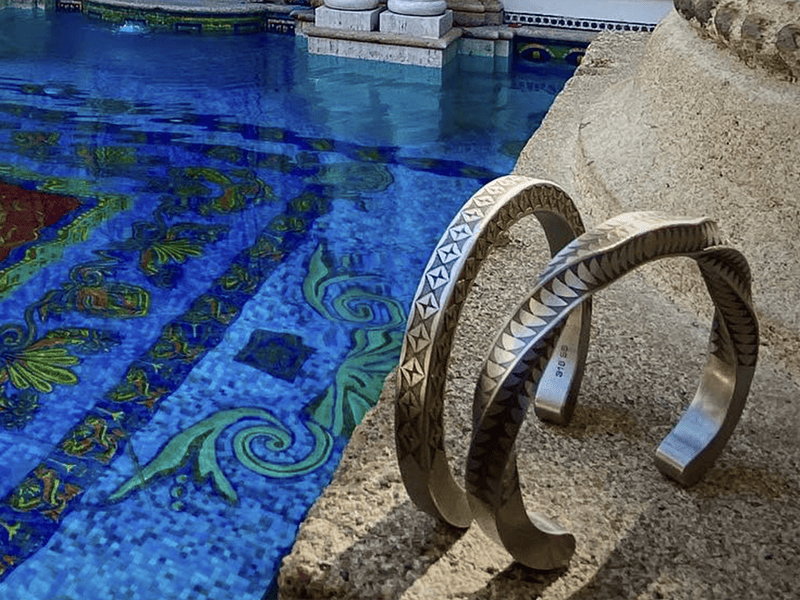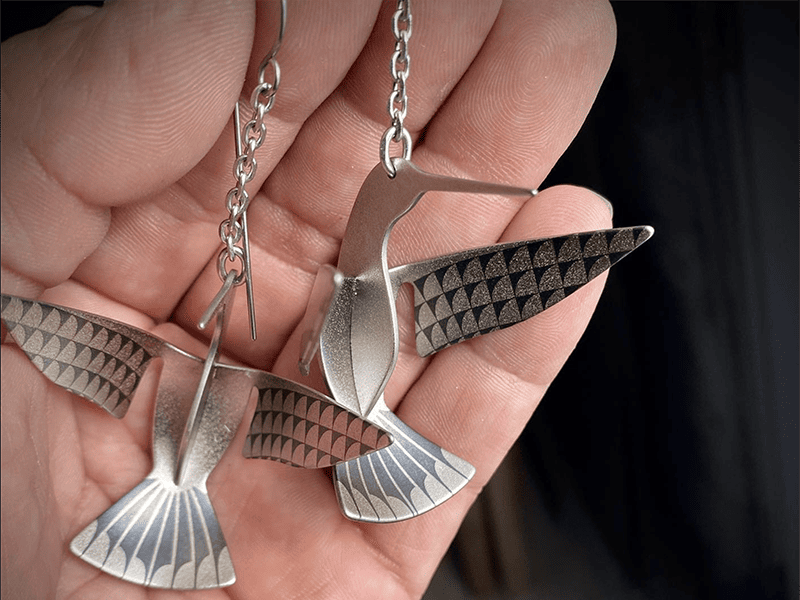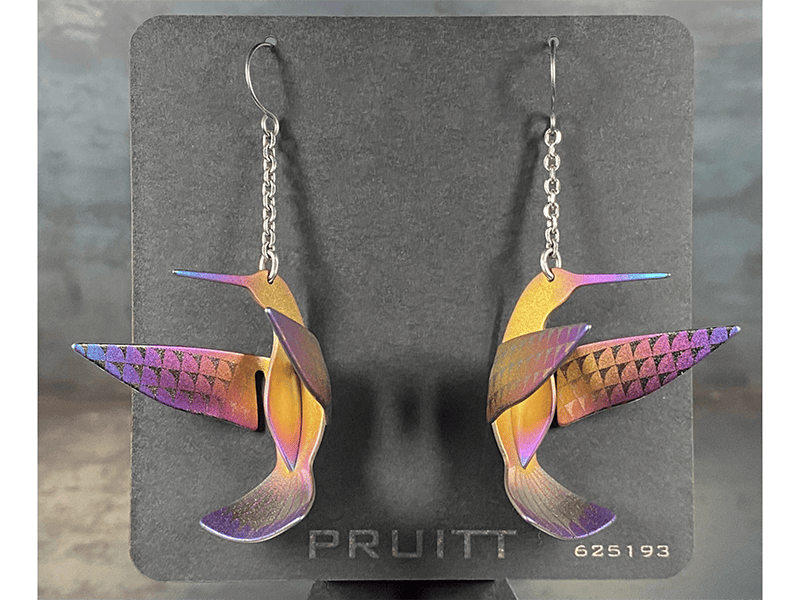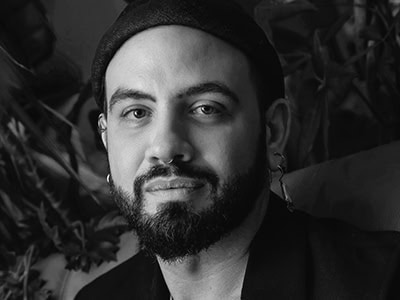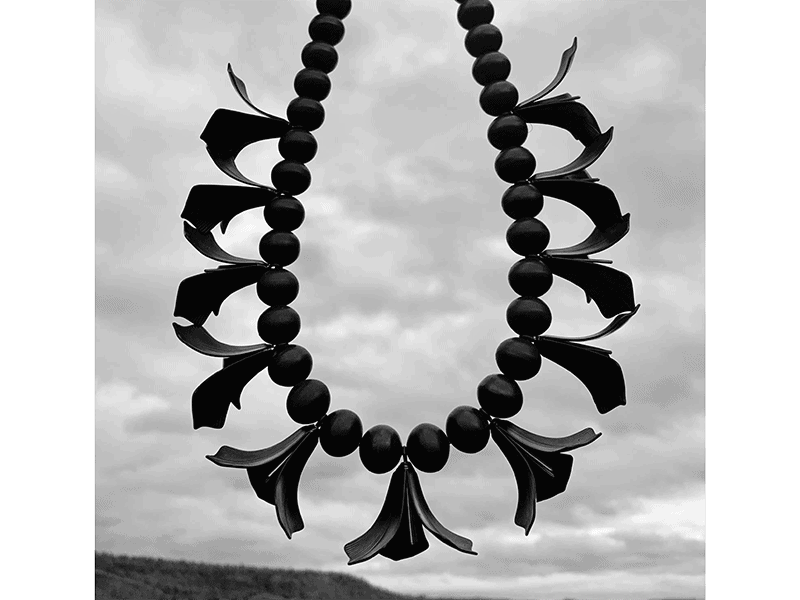
Also in this series:
- Indigenous &: Not Always Looking West (with Brian Fleetwood)
- Indigenous &: Placing Practice While Being Displaced (with Teresa Faris)
- Indigenous &: Having Roots to Grow in New Directions (with Elias Not Afraid)
This is the fourth and final interview in the “Indigenous &” series. The first was with Brian Fleetwood, the second with Teresa Faris, and the third with Elias Not Afraid. This format has allowed me as an interviewer to explore some of the commonalities as well as diversity that fall under the term “Indigenous.” It is by no means a complete exploration, but I hope it has offered some entry points to further explore some pretty fantastic work.
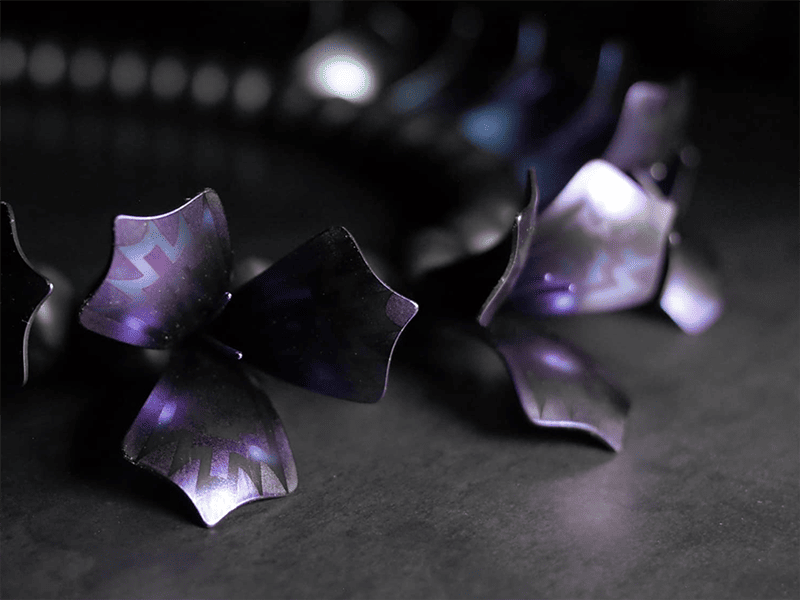
The ampersand in the series title serves as an opening to invite discussion of parts of life that intersect, interweave, and interact with Indigeneity. These are visible in the artists’ studio practices and in the work they produce. That “&” is also a way to enter specificity in nation, gender, sexuality, and other aspects of being human. All the interviewees in the Indigenous & series identify as Indigenous, and they all live in North America.
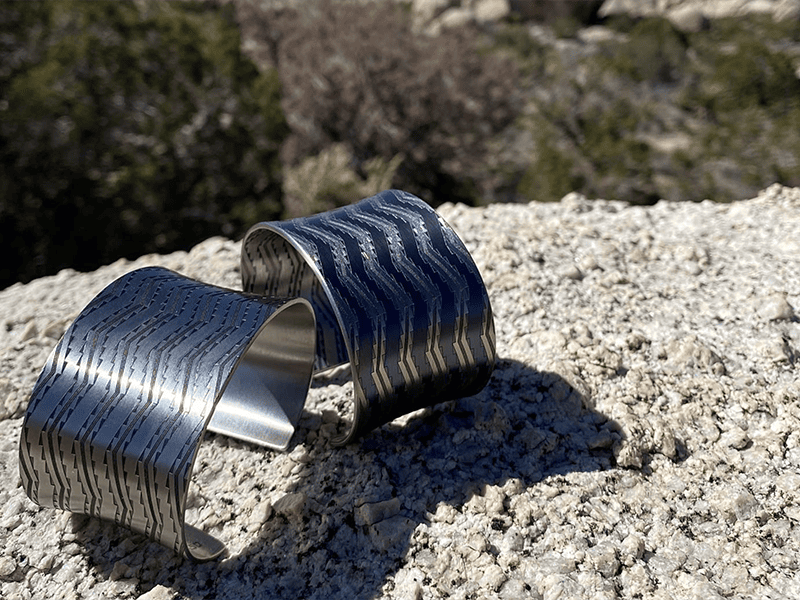
I first encountered the work of Pat Pruitt through Christina Burke, who was then the curator of Native American and non-Western art at Philbrook Museum of Art. It was not Pruitt’s jewelry work that first grabbed my attention, but a large, edgy industrial vessel composed of around 850 parts titled Sentinel 1.0. This work stuck in the back of my head and led me down a rabbit hole that did not disappoint. Pruitt’s work has a balance of industrial aesthetic, using metals more common in manufacturing than jewelry, and he combines them sometimes collaboratively with indigenous patterns and symbols or organic forms found in nature. His work spans the conceptual, the avant-garde, and the easily wearable. It’s a delight to include Pruitt in this series.
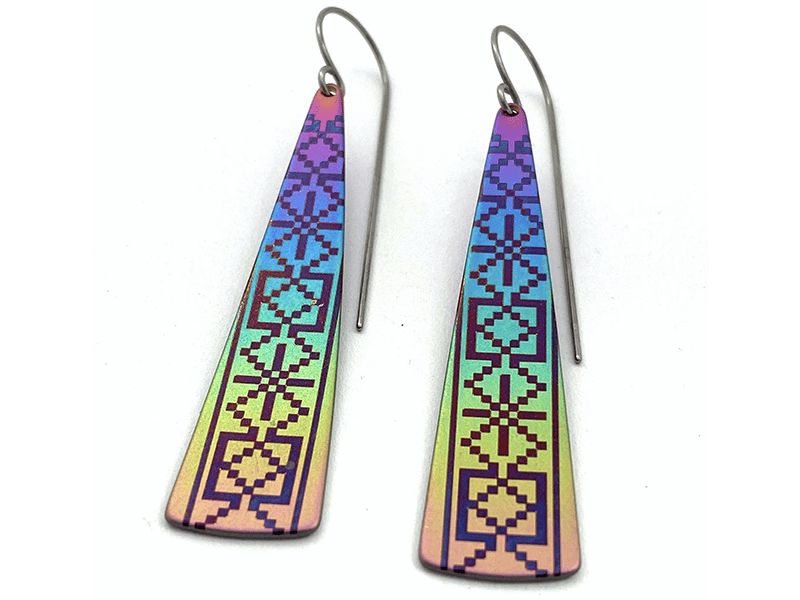
matt lambert: As this is a series with the intention of celebrating Indigenous artists, what part of your background would you like to share?
Pat Pruitt: The name is Pat Pruitt. I am a member of the Pueblo of Laguna, located in New Mexico. I am also of Chiricahua Apache and Anglo descent.

Do you use any specific processes or aesthetics that are specific to your tribal affiliation?
Pat Pruitt: Generally, no. I am in the process of developing a line that will use traditional pottery designs that the Pueblo of Laguna is known for.
You are well known for working in stainless steel, titanium, and zirconium. What initiated your interest in these materials?
Pat Pruitt: Having an early professional career making jewelry for the body-piercing industry. That was my introduction to implant-grade stainless steel and titanium. Zirconium came much later. It’s more of an aesthetic metal for me, with its ability to grow a black zirconium oxide layer.
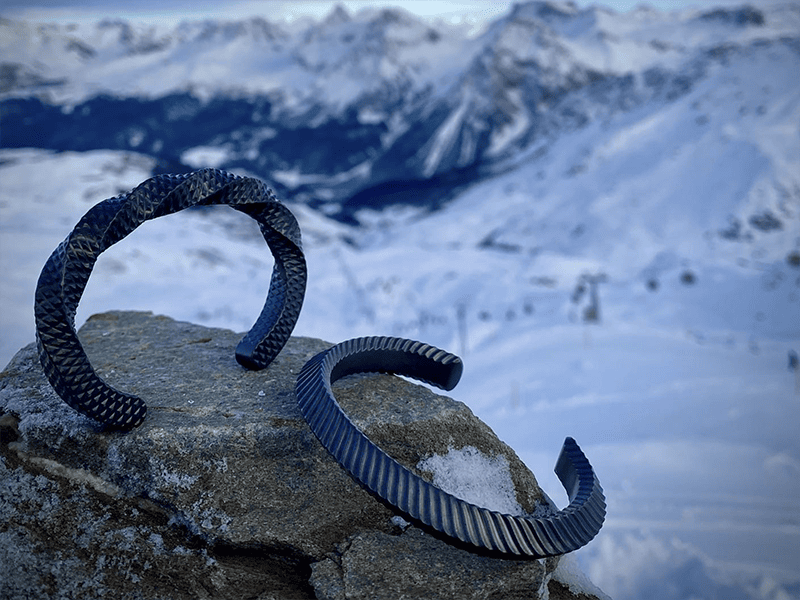
What motivated you to transition from body piercing to jewelry and other metalwork?
Pat Pruitt: Jewelry has always been the baseline of my work. As I progressed and acquired more resources, additional projects came my way. All these projects were based in metal, hence my identity as a metalsmith. Having the ability to do things other than jewelry is always a blessing.
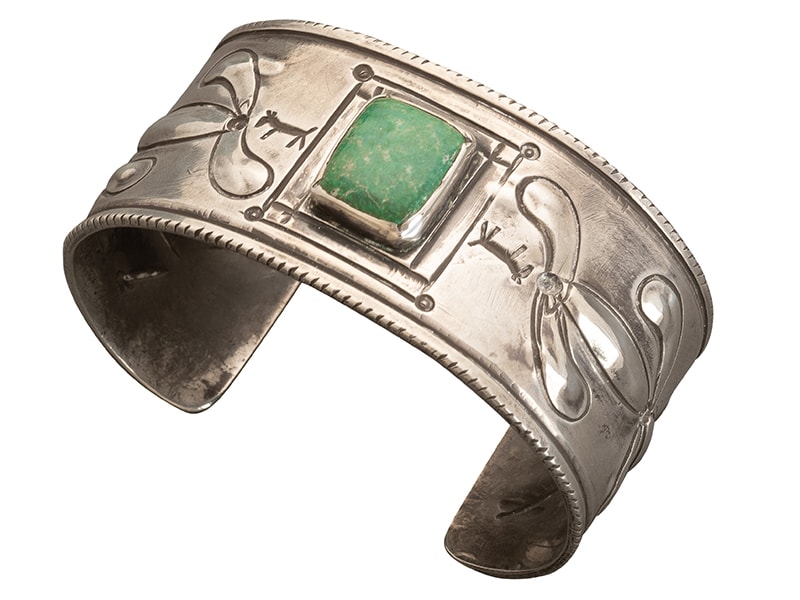
How did you learn metalworking techniques? Do/did you have a mentor or get any formal education?
Pat Pruitt: I have had a few informal apprenticeships, one with the late Greg Lewis and one with Charlie Bird. Both are renowned Laguna Pueblo silversmiths. I was also very fortunate to have other jobs in which my metalworking skills were extended into areas other than the jewelry trade. One was being the shop monkey in a prototype machine shop. Now that was a unique experience.
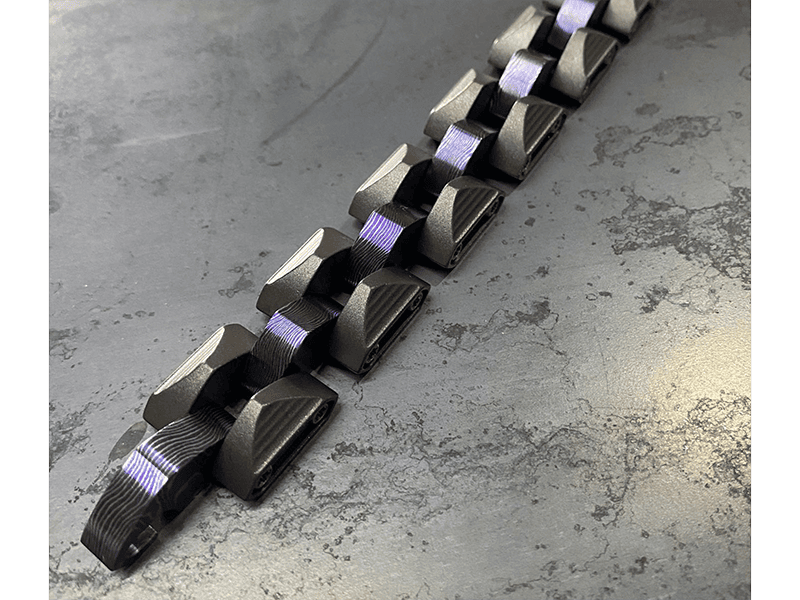
You have a contemporary industrial aesthetic, as the Indian Pueblo Store states on its website. What inspires or pulls you toward this look?
Pat Pruitt: I just like clean design. With the materials I use, it automatically has that industrial feel to it, the two seem to integrate well with each other … the material and design just work out phenomenally in my hands … and the process used for my fabrication aids with the precision and accuracy.

I first encountered your work through your vessel forms, which have been recognized with several awards. You have also created larger wearable works that have won couture category awards, as well as more affordable production-based work that could easily be worn all day, every day. How do you decide to work on specific forms and different scales?
Pat Pruitt: It really is driven by what I feel like at that moment in time. Larger showpieces come around every once in a while, due to the commitment in materials and time. The unknown of selling it is always frightening.
Scale must be practical, especially if it’s true adornment. One cannot, in good faith, make something that an individual cannot wear comfortably. There are pieces of “art jewelry” out there that look fucking fantastic on the person and in photos, but are unwieldly to wear and quite cumbersome. An individual could not wear the piece for an evening out on the town.

Is there anything you’d like to see change in the jewelry and metalsmithing discourse?
Pat Pruitt: Honestly, no. Evolution will happen over time.
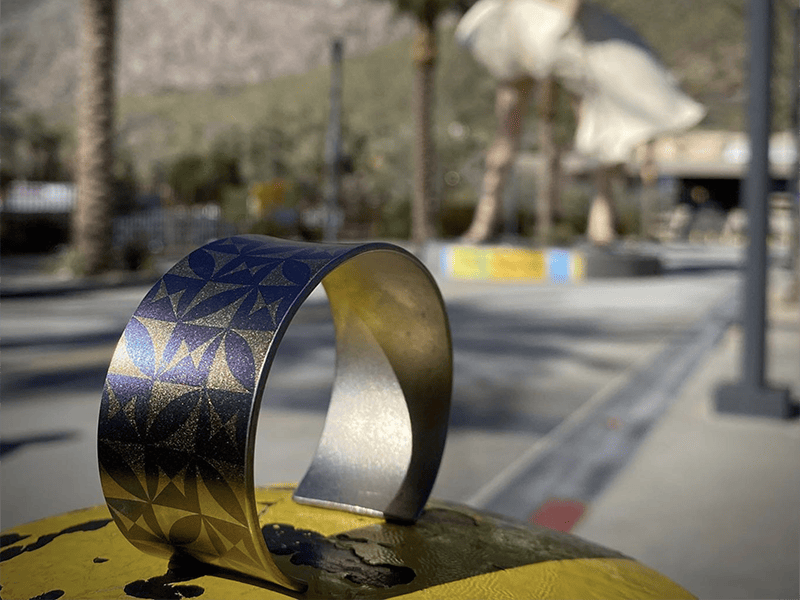
When making work, do you have a specific audience or venue in mind?
Pat Pruitt: I used to, thinking a certain “individual” would like this piece or that. I have often been proven wrong when someone who is the exact opposite [of what I expected] acquires the piece.
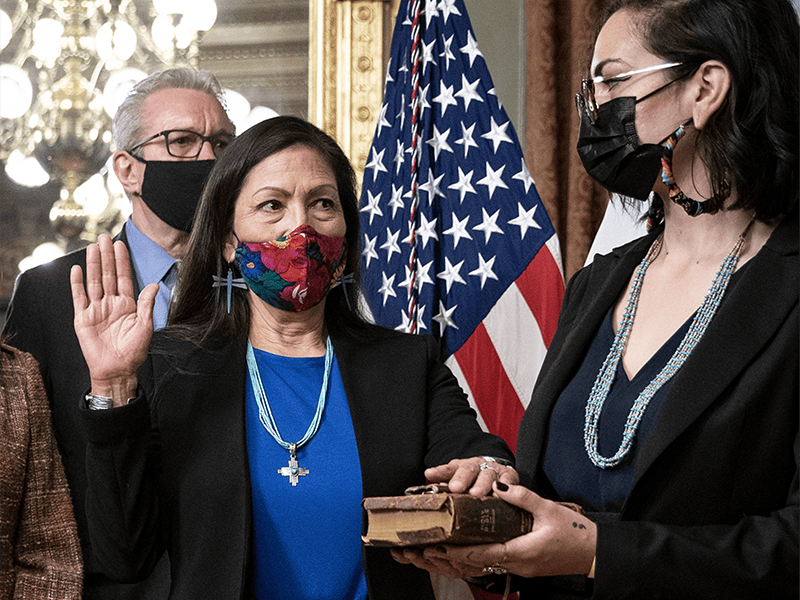
Secretary Deb Haaland [from the US Department of the Interior] wore your earrings during her swearing-in ceremony. What does it mean for you to have the first Native American Cabinet Secretary wear your work on such a historical day?
Pat Pruitt: It truly was an honor. Deb and I go back a long way, before her political career started, and those earrings came into play via a mutual friend. I feel Deb wanted to represent Native America and specifically her Laguna People in a very significant and subtle way. To be a small part of that is truly humbling, knowing others look to her for inspiration. It is truly exciting.
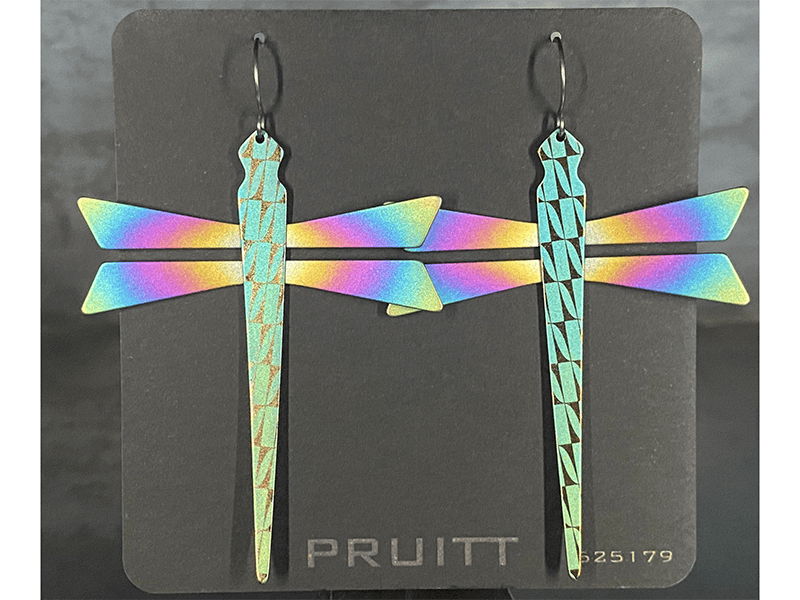
What are some thoughts for the future? Is there a place you’d like to show, or a project you’d like to make happen?
Pat Pruitt: I have attained a certain comfort level with who I am and the work that has come from these hands over the years. I have been very fortunate with who represents my work, and where my work has been shown. As one person, I really don’t have any one place where I would like to show or have my work shown. I do cherish the fact that there is a large body of my work being worn by individuals all over the world from all walks of life.
The major projects are slow but sure. Part of my challenge is that the equipment needed to advance my skillsets is quite expensive these days. Gone are the days of $200 tools, so it takes me quite a few years to save and acquire the next “big thing” for my fabrication needs.
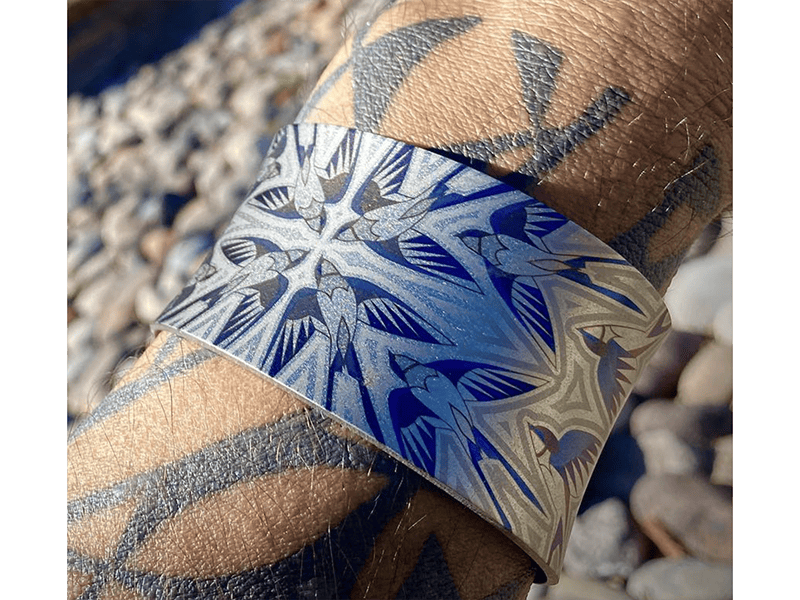
Where can readers see more of your work or follow what you’re doing?
Pat Pruitt: On Instagram, for sure: @patpruittmetalsmith.

Do you have any recommended artists or other resources to look at?
Pat Pruitt: Oh, that’s a tough one … there are a lot of friends in the industry who I admire. It would be a shame and embarrassing to forget one or two or three. As for resources, I always look to industry for interesting developments in metal fabrication. It’s always interesting to see where life paths take people, so this can also be a very meaningful resource when you look closely at it.
